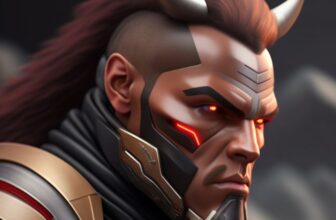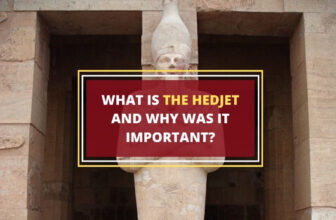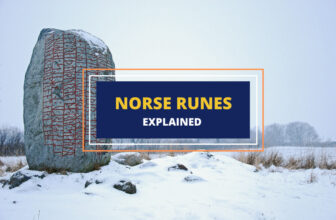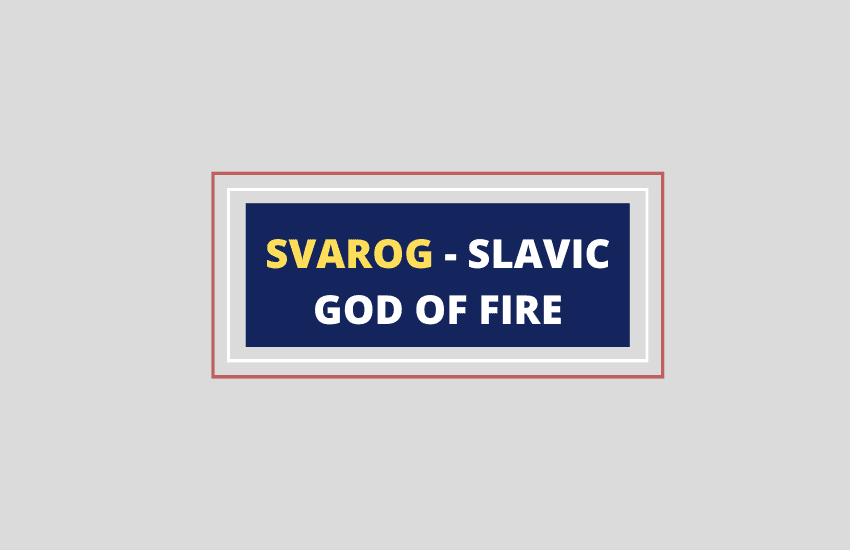
Table of Contents
Svarog was a Slavic creator god, who reigned over all aspects of creation, including the spirits of the dead. The name Svarog is derived from the Sanskrit word, Svarg which means heaven. As the name suggests, Svarog presided over the skies and reigned over all Slavic deities. He is the Slavic equivalent of Hephaestus, the Greek god of crafts and fire.
Let’s take a closer look at Svarog, the Slavic creator deity.
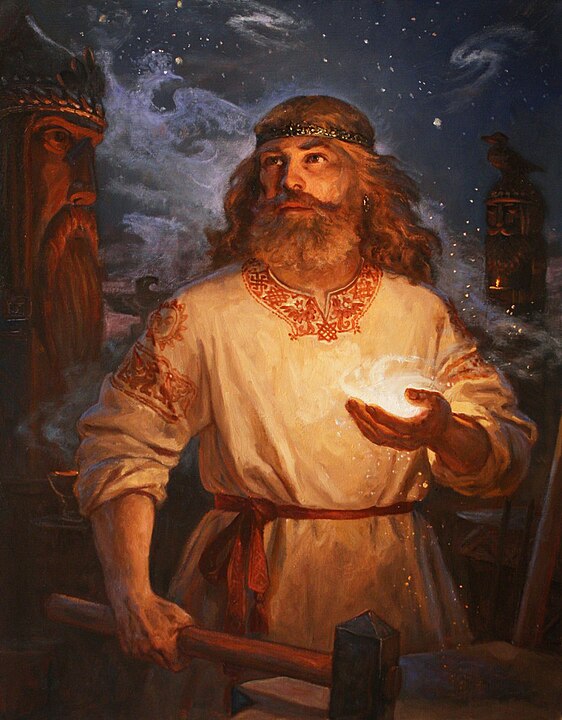
Origins of Svarog
Svarog was worshipped by the Slav’s during their transition into the Iron Age. Various Slavic tribes saw Svarog as a champion of technological advancements, and he was believed to have created the universe with his hammer.
Much of what we know about Svarog is derived from the Hypatian Codex, a Slavic text translated from the works of John Malalas. Researchers and historians who have read the Hypatian Codex, have come to the understanding that Svarog was the deity of fire and blacksmithing.
Svarog and the Creation Myth
In Slavic myths, folklore, and oral traditions, Svarog was depicted as the creator deity.
In one tale, a duck discovered the magical Alatyr stone, and carried it in its beak. When Svarog witnessed the duck holding the stone, he realized its powers and potential. Svarog then enlarged the size of the stone, so that the duck would drop it. Once the duck dropped the stone, it transformed into a large mountain. This place became a centre of knowledge, and even contained the power to mediate between gods and mortals.
Since the stone carried such intense magical powers, Svarog sought to destroy it. He tried shattering the stone with his hammer, but no matter how many times he struck, it didn’t break. As a result of the contact, however, sparks emerged, from which other gods and goddesses were born.
The duck witnessed these events and transformed into an evil serpent. He then pushed the stone onto the mortal world. As the stone fell, it struck the ground and created a plethora of dark sparks. These sparks created evil forces, who joined with the snake and blotted out the sun. Before it was too late, however, Svarog intervened and tamed the snake. The animal was then used as a tool to plough the fertile fields.
Svarog and Dy
A Slavic myth recounts the encounter between Svarog and Dy, the god of thunder. One day when Svarog was feasting in his palace, his warriors entered. They were badly beaten and attacked by the giants of Dy.
Furious at this, Svarog gathered his army and went to the Ural Mountains, where Dy lived. His soldiers defeated Dy’s army and brought victory. After the defeat, Dy’s son, Churila offered the Svarog his services. When Churila was feasting with the victors, the Slavic goddess Lada, began to fall in love with his good looks. Svarog immediately recognized her folly and warned her.
Svarog and the Heavens
Svarog presided over the Blue Svarga, a place in heaven, where the deceased souls resided. This was an important place for the Slavs, and it was believed that the stars within the Blue Svarga were eyes of forefathers, who looked upon the Slavic people.
The Symbols of Svarog
Svarog’s chiefly associated with two symbols, the Kolvrat and the Slavic Swastika.
1. Kolvrat
The Kolvrat is a spoked wheel and a Slavic symbol of spiritual and secular power. This symbol was chiefly held by the creator deity or supreme being.
2. Swastika
The Slavic Swastika was a symbol of cyclic time and represented the processes of birth and death. This symbol was the most sacred in the whole of Slavic religion.
Svarog’s Contributions to Humankind
Svarog was venerated and worshipped for his numerous contributions to humankind. He created a more orderly and organized world.
- Establishing order: Svarog established order in the world by eliminating chaos and confusion. He also introduced the concept of monogamy and familial commitment.
- Food: Svarog taught humans how to make foods from milk and cheese. This is why the Slavs prayed before consuming dairy products, as they thought of it as a blessing from the god.
- Fire: Svarog gave the Slavic people the gift of fire, with which they could fight off the cold, and cook their meals.
- Tools and Weapons: Svarog gifted the Slavs with an axe to protect their lands from the enemies. He also provided them with tongs to create forged weaponry.
The Worship of Svarog
Svarog was worshipped throughout ancient Slavdom, and historians have pointed out several temples and shrines built in his honor. According to one writer, armies would place their war flags in these temples after battle, and animals and humans would be sacrificed to venerate the god.
The South Slavs didn’t worship Svarog directly, but venerated his son, Dažbog, the solar deity. However, his popularity was soon diminished by the Russian Vikings, who displaced the cult and worship of Svarog.
Svarog in Contemporary Times
The worship of Svarog has increased in contemporary times with the rise of Neo-pagans. The Neo-Pagans have attempted to revive Slavic beliefs, and distance themselves from other religions. Some Neo-Pagans have also chosen Svarog as their supreme being.
In Brief
Svarog was an important creator deity in Slavic beliefs. Although many of his myths have eroded with the passage of time, contemporary cultures have kindled a new interest and revival of the deity.





